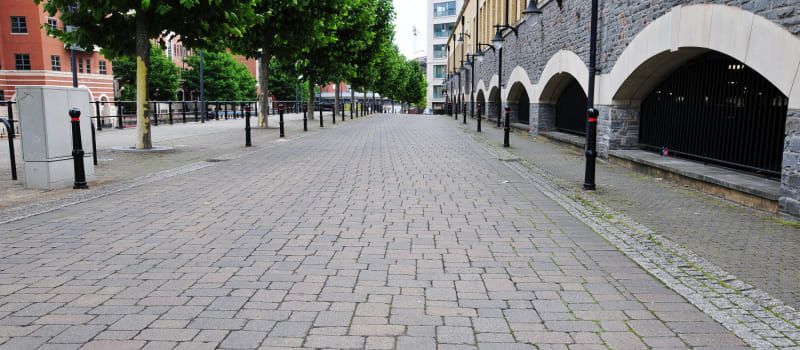
Do Low-Traffic Zones really work?
28th Jun, 2023
Here at Scrap Car Network, as well as providing our customers with the very best place to scrap your car, we like to keep our clients well up-to-date with all the latest motoring news. In recent years, the concept of low-traffic zones (LTZs) has gained significant attention here in the UK as a means to address traffic congestion, improve air quality, and promote active transportation. LTZs aim to create safer and more pleasant spaces for pedestrians and cyclists while reducing the dominance of motor vehicles.
However, the effectiveness of these zones has sparked debates and raised questions about their impact. So, today we’re looking at a few of the key arguments as to whether or not low-traffic zones really work in the UK, by examining their objectives, benefits, challenges, and potential solutions. But let’s start with the definitions!
What are Low-Traffic Zones?
Sometimes known as a traffic-calmed neighbourhood or filtered permeability scheme, a Low Traffic Zone restricts vehicle access to certain areas within its boundaries, to make it easier for pedestrians and cyclists to freely make their way through it. LTNs typically utilise a number of measures to do this – often, it’ll be through strategic placement of things like bollards, planters, or cameras. The idea is to limit the ability of cars, motorbikes and vans to get through them – ultimately making them quieter, safer, and less stressful for pedestrians.
Objectives of Low-Traffic Zones
The objective of a Low-Traffic Zone can essentially be summarised in a single aim – reducing congestion in built-up areas. However if we’re speaking more broadly, there are a few other key aims of low-traffic zones.
- Enhancing safety – reducing traffic volume and speed can create safer spaces for vulnerable road users, including pedestrians and cyclists, thereby reducing the risk of accidents and injuries.
- Improving air quality – reducing motor vehicle usage in LTZs can lead to decreased emissions, which contributes to improved air quality and reduced pollution levels.
- Encouraging active travel – providing safer and more appealing conditions for walking and cycling can promote more active modes of transportation, which can improve public health and reduce reliance on cars.
- Enhancing community spaces – LTZs often prioritise the creation of community spaces and encourage social interactions by transforming roads into areas for leisure, play, and community events.
What are the main benefits of Low-Traffic Zones?
Low-Traffic Zones actually provide a range of benefits to the local area, which is why local councils have tried to introduce them in a variety of locations across the country. The main benefits include:
- Improved safety – studies have shown that LTZs lead to a decrease in road accidents, particularly those involving vulnerable road users. Reduced traffic volume and speeds make roads safer for all.
- Health and well-being – promoting active travel encourages physical activity and improves public health. Increased walking and cycling can lead to reduced obesity rates, better mental health, and lower levels of air pollution exposure.
- Enhanced quality of life – LTZs can create more pleasant and liveable neighbourhoods by reducing noise, congestion, and pollution. They offer opportunities for community engagement, increased social cohesion, and the development of local businesses.
Challenges and concerns surrounding LTZs
Despite their benefits, there are a few major issues surrounding LTZs, which is why they’re not common place on UK streets. Some of the larger problems include:
- Displacement of traffic – critics argue that LTZs may divert traffic to surrounding areas, causing congestion and pollution problems in nearby neighbourhoods that are not part of the scheme.
- Accessibility and disruption – restricting vehicle access can potentially affect accessibility for certain groups, such as elderly or disabled individuals, who rely on private vehicles. Furthermore, implementing LTZs can disrupt established travel patterns and inconvenience some residents and businesses.
All in all, the effectiveness of LTZs is a topic of ongoing debate, with differing opinions on their impact and long-term viability. Low-traffic zones hold the potential to transform urban spaces, making them safer, healthier, and more sustainable, but many challenges and concerns still exist.
Wherever you line-up on the debate around LTZs though, you can be sure of one thing – if you ever feel the need to ‘scrap my car’ we’re here to help. Get an instant online quote today! It’s free, and there’s zero obligation until you decide you’re ready to proceed. Just enter your car reg and postcode into the fields on our site, and within seconds you’ll be looking at your very own instant online quote. Ready to find out how much your car is worth?